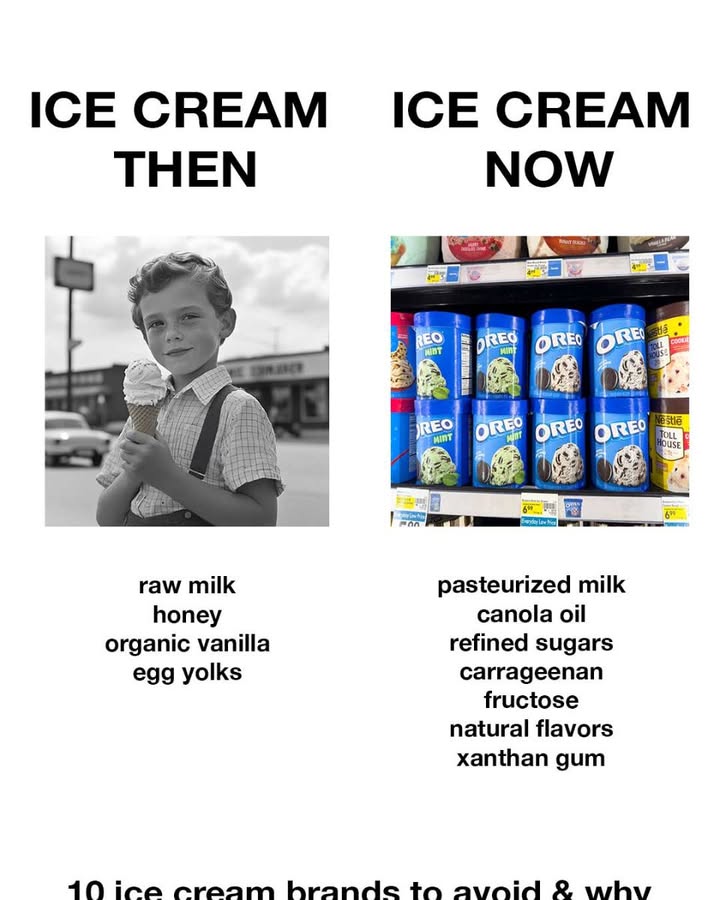Ice cream is a universally adored dessert, delighting people of all ages with its creamy texture and endless flavors. Yet, beneath its inviting surface, not all ice creams are as innocent as they seem. Many commercial brands pack their products with additives that enhance flavor, color, or shelf life but may quietly harm your health. From artificial dyes to questionable stabilizers, these ingredients can have serious consequences over time. Understanding what lurks in your favorite scoop is the first step toward making smarter, healthier choices.
Understanding Harmful Additives in Ice Cream
Additives in ice cream serve practical purposes: artificial colors make it eye-catching, flavors amplify taste, and preservatives extend shelf life. Stabilizers like guar gum or carrageenan keep the texture smooth. While these may sound harmless, their impact isn’t always benign. Some are linked to allergic reactions, behavioral changes in children, or even long-term risks like cancer. The key to enjoying ice cream safely lies in decoding ingredient labels and recognizing what’s worth avoiding.
The Impact of Red No. 3 on Health
Red No. 3, or Erythrosine, is a synthetic dye that lends ice cream vibrant pink or red hues, often seen in strawberry or cherry flavors. While it’s visually appealing, its safety is questionable. Animal studies have linked Red No. 3 to thyroid tumors, raising red flags about its effects on humans. The FDA banned it from cosmetics and external drugs in 1990, yet it remains legal in food. Critics argue its presence in treats like ice cream is an unnecessary risk, especially for children who consume it frequently.
Why Titanium Dioxide Should Be Avoided
Titanium dioxide, a whitening agent, gives some ice creams a brilliant, pristine look—think vanilla or coconut flavors. But its bright facade hides a darker side. Classified as a “possible carcinogen” by the International Agency for Research on Cancer (IARC), titanium dioxide has sparked concern. Research suggests it may cause inflammation, oxidative stress, or even DNA damage when ingested in large amounts. While it’s still permitted in the U.S., countries like France have banned it in food since 2020, urging consumers to rethink its safety.
Other Common Unhealthy Additives in Ice Cream
Beyond Red No. 3 and titanium dioxide, ice cream often harbors other troubling ingredients:
High Fructose Corn Syrup (HFCS): A cheap sweetener tied to obesity, diabetes, and liver damage.
Artificial Flavors: Synthetic compounds that can trigger allergies or migraines in sensitive individuals.
Polysorbate 80: An emulsifier linked to gut inflammation and metabolic issues in animal studies.
Carrageenan: A thickener derived from seaweed, which may cause digestive discomfort or inflammation.
These additives prioritize profit and convenience over consumer well-being, making label scrutiny essential.
Top 10 Ice Cream Brands to Avoid
Not all ice cream brands are transparent about their ingredients. Here are ten popular ones you might want to skip if health is a priority, based on their reliance on questionable additives. (Note: Specific concerns are based on common formulations; always check current labels for accuracy.)
1. Breyers – Issues and Concerns
Breyers, once a natural-ingredient champion, now uses Red No. 3 in some flavors, alongside HFCS and artificial flavors. Its high sugar content adds to the risk.
2. Blue Bell – Issues and Concerns
Blue Bell’s creamy appeal often comes from titanium dioxide and polysorbate 80. Some varieties also pack in artificial colors and excessive fats.
3. Turkey Hill – Issues and Concerns
see continuation on next page
